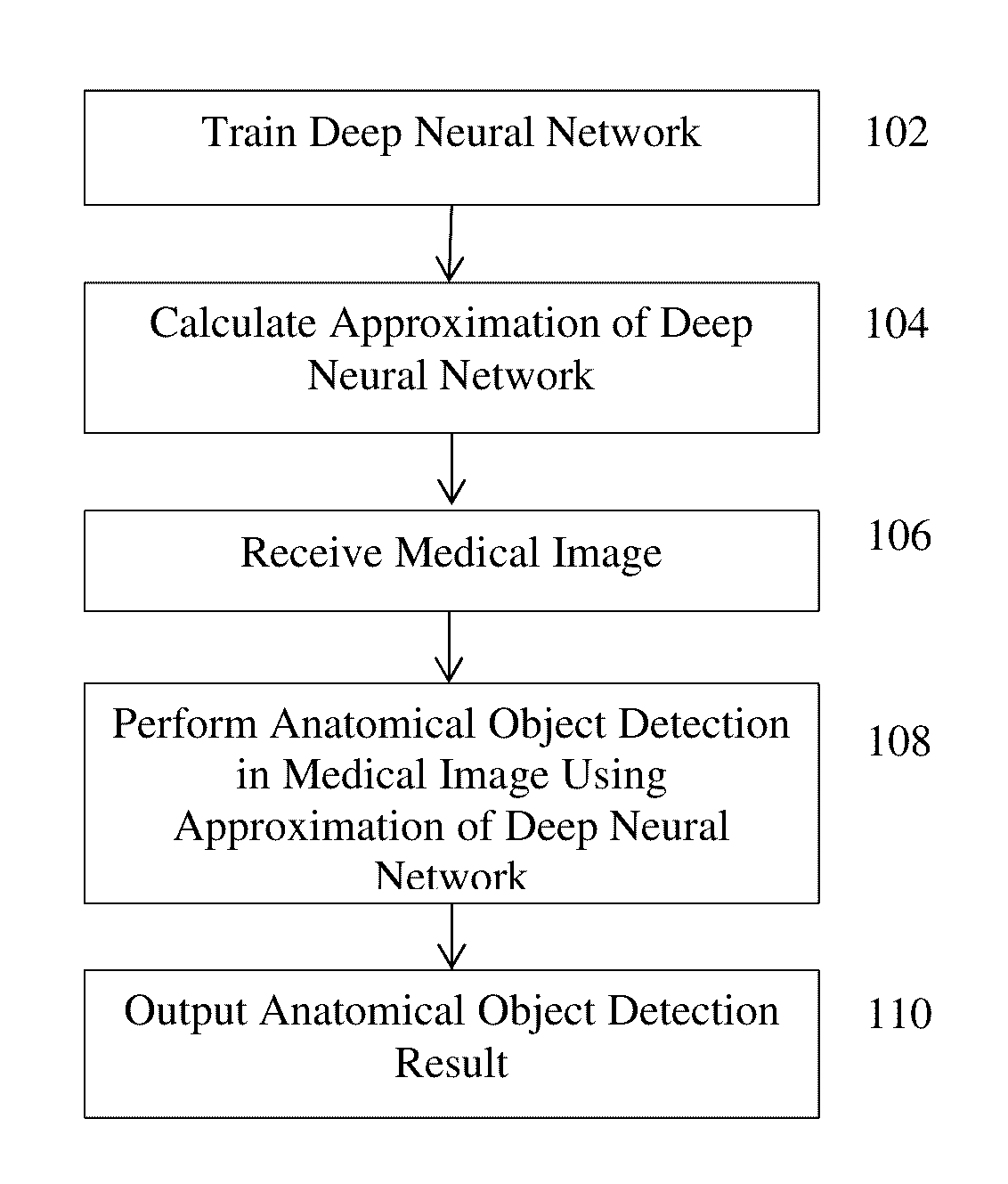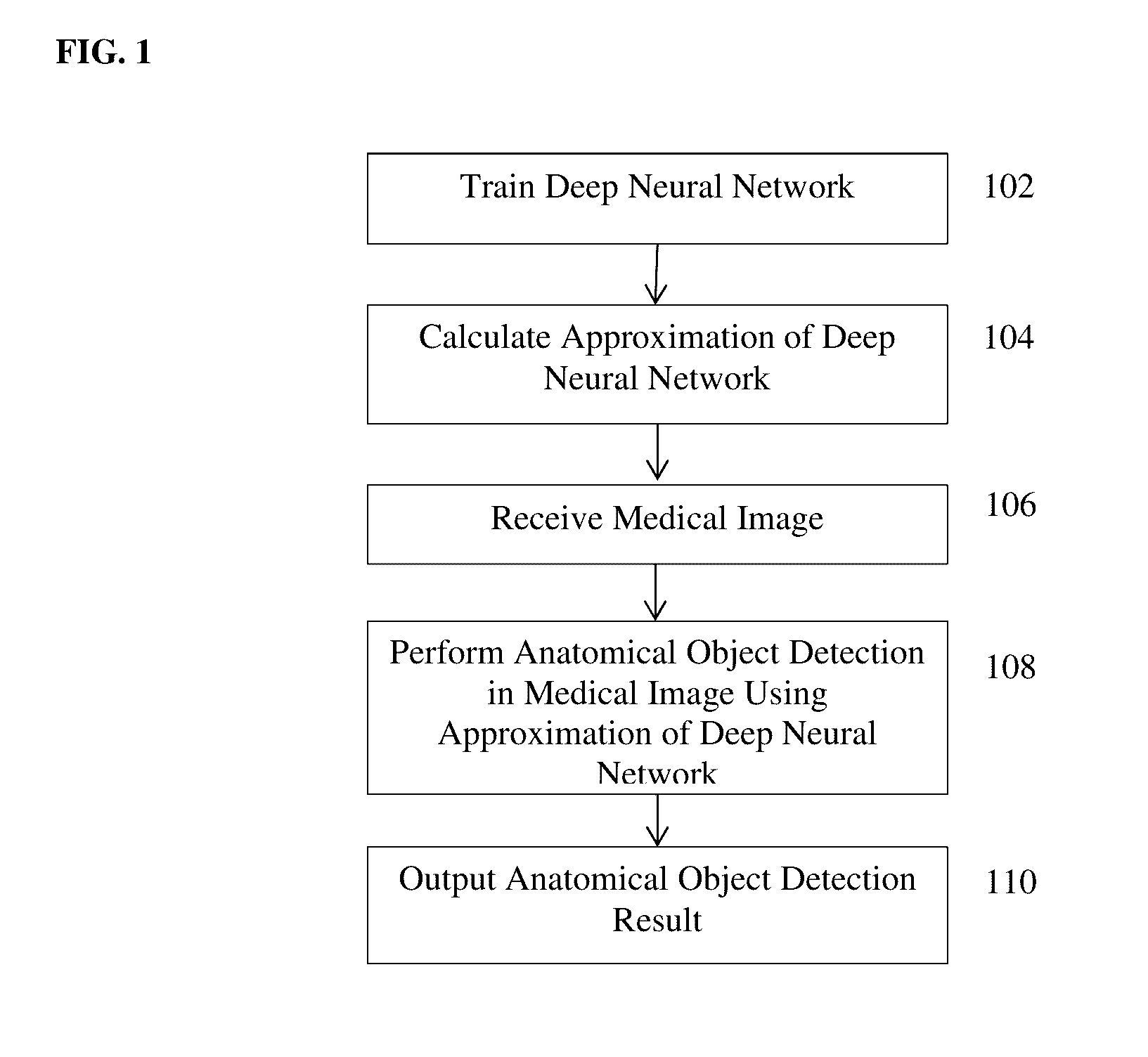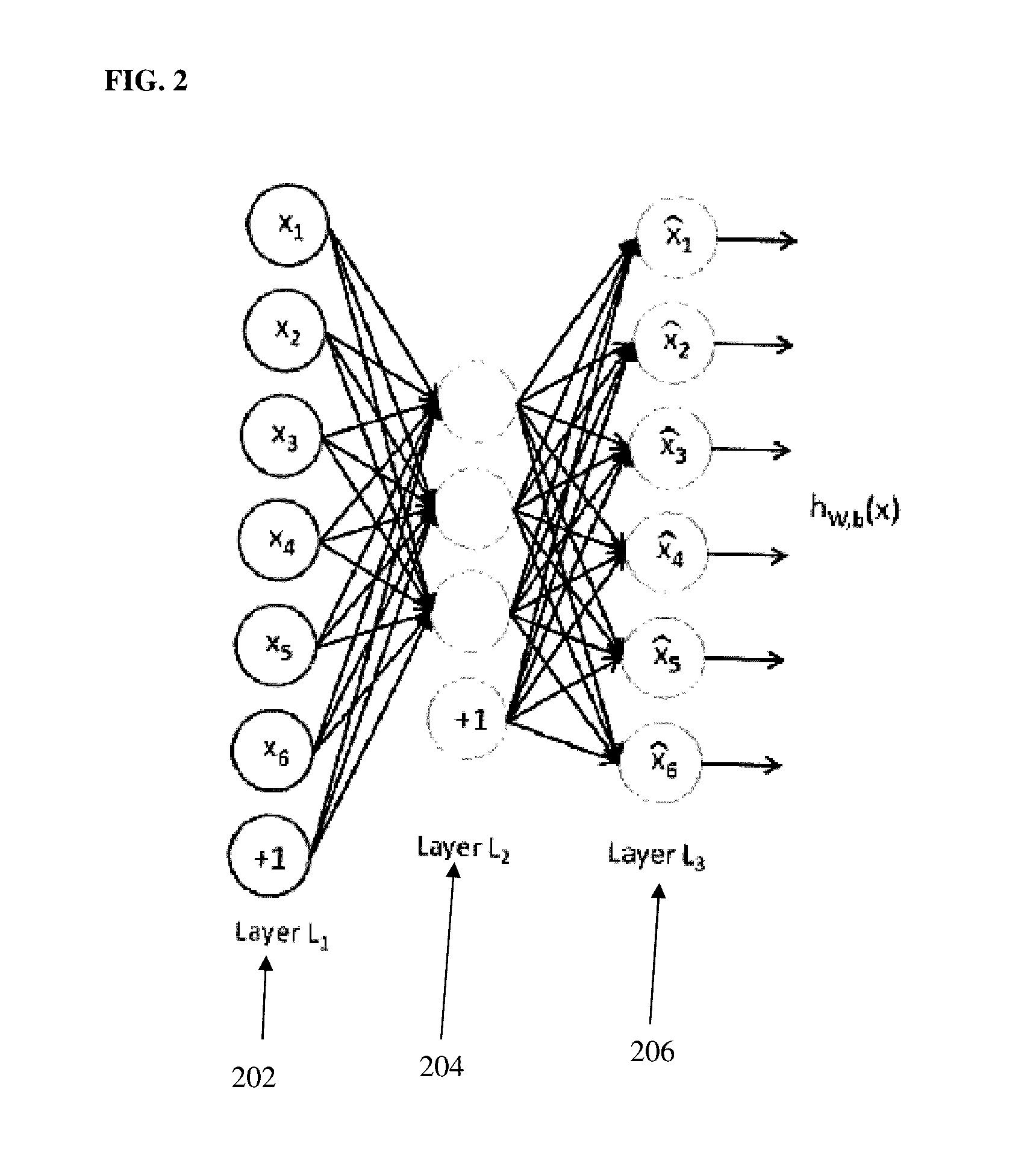Method and System for Approximating Deep Neural Networks for Anatomical Object Detection
a deep neural network and anatomical object technology, applied in the field of anatomical object detection using deep neural networks, can solve the problems of high computational cost, dimensionality curse, and the complexity of a learning problem grows exponentially with a linear increase, so as to reduce the computational complexity of a trained deep neural network and computational efficiency.
- Summary
- Abstract
- Description
- Claims
- Application Information
AI Technical Summary
Benefits of technology
Problems solved by technology
Method used
Image
Examples
Embodiment Construction
[0021]The present invention relates to a method and system for approximating deep neural networks for anatomical object detection in medical images. Embodiments of the present invention are described herein to give a visual understanding of the methods for approximating deep neural networks and anatomical object detection in medical images. A digital image is often composed of digital representations of one or more objects (or shapes). The digital representation of an object is often described herein in terms of identifying and manipulating the objects. Such manipulations are virtual manipulations accomplished in the memory or other circuitry / hardware of a computer system. Accordingly, is to be understood that embodiments of the present invention may be performed within a computer system using data stored within the computer system.
[0022]FIG. 1 illustrates a method for anatomical object detection in a medical image using a deep neural network approximation according to an embodiment...
PUM
 Login to View More
Login to View More Abstract
Description
Claims
Application Information
 Login to View More
Login to View More - R&D
- Intellectual Property
- Life Sciences
- Materials
- Tech Scout
- Unparalleled Data Quality
- Higher Quality Content
- 60% Fewer Hallucinations
Browse by: Latest US Patents, China's latest patents, Technical Efficacy Thesaurus, Application Domain, Technology Topic, Popular Technical Reports.
© 2025 PatSnap. All rights reserved.Legal|Privacy policy|Modern Slavery Act Transparency Statement|Sitemap|About US| Contact US: help@patsnap.com



